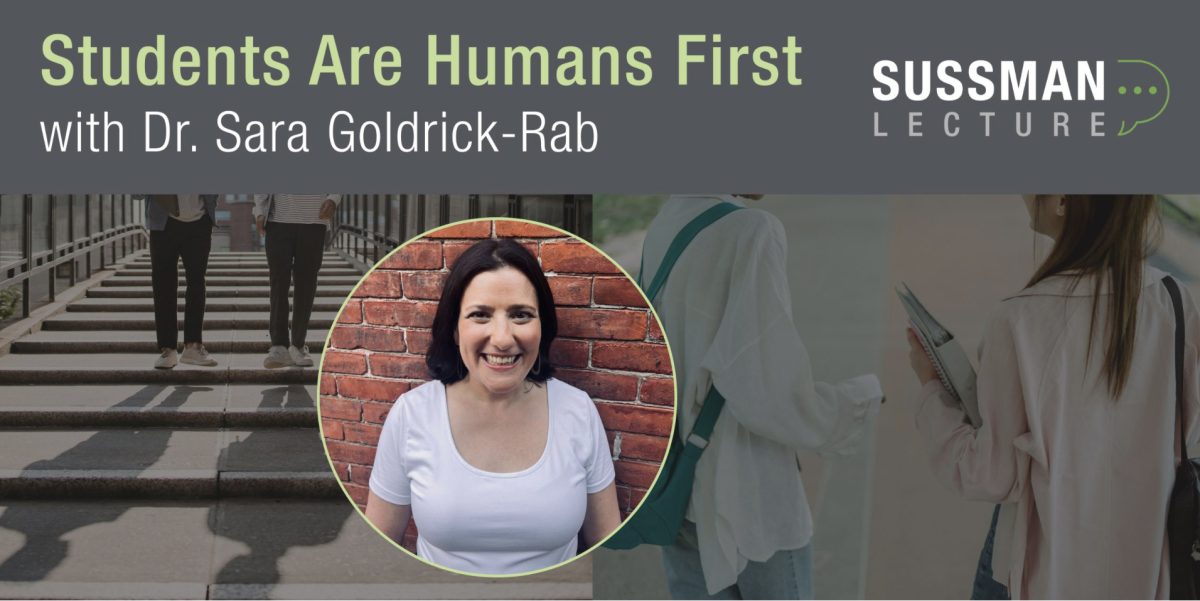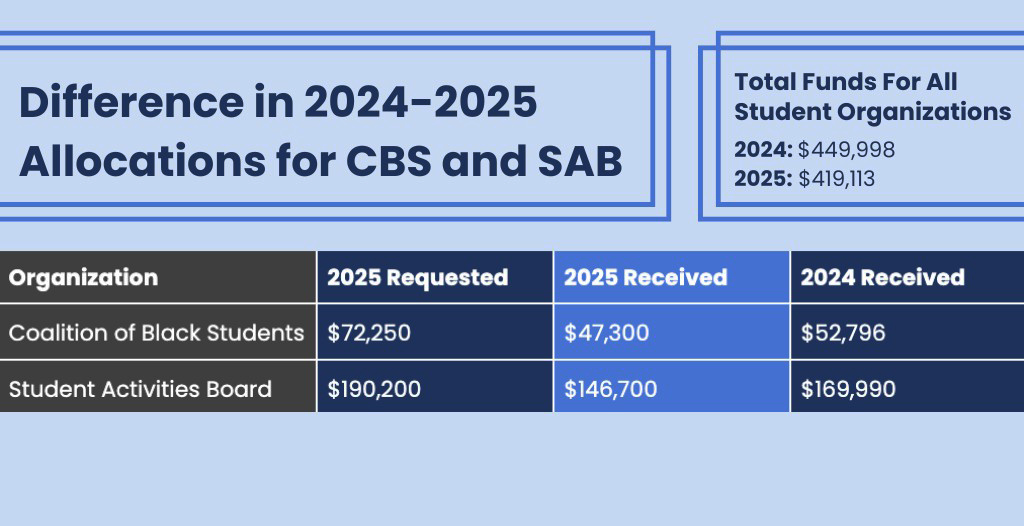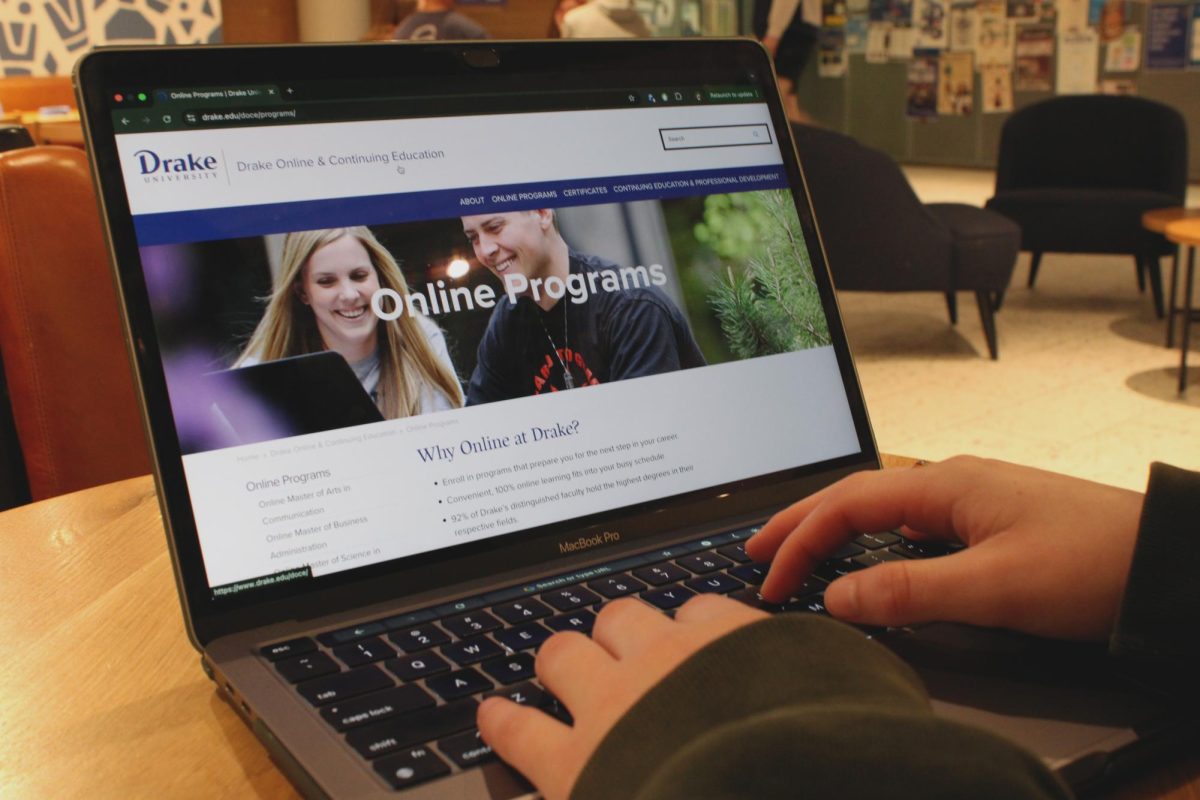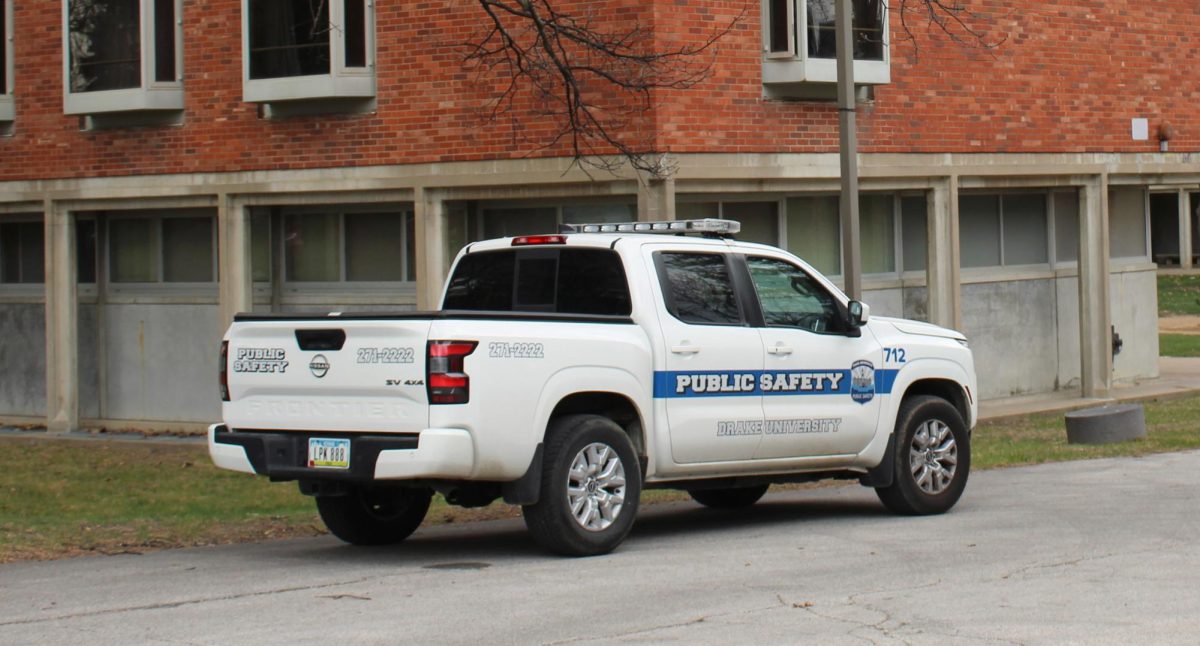On the evening of Thursday, Feb. 20, Dr. Sara Goldrick-Rab presented her lecture entitled “Students are Humans First” for the spring edition of the Harkin Institute’s Sussman Lecture series.
The Harkin Institute was founded by former Iowa Senator Tom Harkin as a public policy research institution meant to foster community engagement and informed decision-making. Its Sussman Lecture series is meant to host public policy figures who specialize in issues that define public life in order to create community dialogue on those topics.
Goldrick-Rab’s lecture highlighted the many social and cultural barriers that American college students face in their pursuits of higher education, especially some students’ lack of access to food, housing, childcare, transportation and healthcare. She proposed that higher education has a larger role to play in addressing some of the students’ basic needs.
“I think that we could begin to conceive of at least some of our institutions as integral to our public health systems, to our community and so on,” said Goldrick-Rab.
Goldrick-Rab also challenged the notion that higher education institutions are places of accessibility.
Higher education, she said, would require “being able to acquire the same kinds of information, engaging in the same interactions and enjoying the same services” However, this is not the case.
Goldrick-Rab’s perspectives on accessibility in higher education come from her own experiences as a professor at the University of Wisconsin-Madison, Temple College and the Community College of Philadelphia.
“I was meeting Wisconsin college students…who were homeless, who were hungry,” Goldrick-Rab said. “I met one person who had just had a baby and was living in a homeless shelter. But if you Googled homelessness among college students, there was nothing to see.”
However, her studies into the barriers that college students face were stymied by a lack of previous research and a lack of political willpower.
“The federal government told me that this was not an educational concern,” Goldrick-Rab said of student homelessness and poverty. “They would not collect any data on the matter.”
Despite the lack of previous research, Goldrick-Rab began to conduct her own studies into student homelessness, food insecurity and housing insecurity. Now, she believes over half of American college students face those kinds of barriers to accessible higher education.
“We now know that according to the most conservative estimates, the kinds the federal government does, that restricts the definition of homelessness to only the kind that they can accept…there’s more than a million college students homeless in America at any given moment,” Goldrick-Rab said. “They’re on virtually every campus I’ve ever visited.”
Goldrick-Rab recounted personal stories of talking to unhoused college students who were unable to complete their education.
“The first thing they tell me is that it’s their fault, and the second is that they’re the only one,” Goldrick-Rab said.
However, Goldrick-Rab articulated that the numbers, which show that approximately 60% of college students face these issues, can’t possibly be attributed to individual failures. Instead, she calls this a “systemic failure.”
Goldrick-Rab claimed that the leading cause of student debt wasn’t actually tuition, but the cost of rent, groceries and childcare. Many working students are unable to get flexible hours that would allow them to fully participate in classes, and they often struggle to make ends meet.
Sharon Johnson, who learned about the Sussman Lecture through the Osher Lifelong Learning Institute at Drake, came to Goldrick-Rab’s presentation because she has one grandchild in college and another about to graduate.
“I was very surprised at everything I heard. I did not know any of that,” Johnson said about Goldrick-Rab’s presentation.
Goldrick-Rab’s lecture highlighted that a lack of awareness was common. Even higher education faculty and administration are frequently unaware of the barriers that their students are facing, she said. Goldrick-Rab believes having conversations about these challenges is the first step to addressing them.
“We can still have hope. Hope is a strategy. But we need to start having conversations on what’s really going on,” Goldrick-Rab said.
John Liepa, who teaches at OLLI, said that Goldrick-Rab’s lecture resonated with his own experiences.
“I was a community college instructor for 38 years at the Des Moines Area Community College and I could relate to so much of what she was saying,” Liepa said. “A lot of the challenges are the ones that people aren’t aware of. They think of keeping your GPA up, they think about the cost of tuition, but they don’t think about food, homelessness or these other issues. I taught a lot of single moms, and they had kids, and they would struggle to work out childcare around their schedule.”
Goldrick-Rab concluded her lecture by highlighting the failures of higher education institutions in addressing accessibility barriers and demonstrating her own vision for a higher education system that centers on student needs.
“When we’re down to rubble, I want to see what we build anew,” Goldrick-Rab said. “And I hope it looks more like this: if we want people to learn, we start with their human needs.”







